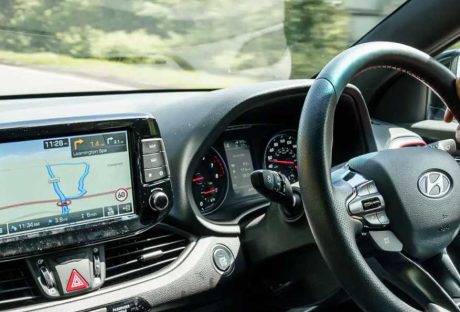Truck accidents are common in our society. While on the road, no one is safe, but that does not mean you will commit accidents randomly.
There needs to be a solution to it. The more you indulge yourself in truck driving training from go4cdl.com, the better you can handle precautions with your experience, and the more you will be able to ensure safety protocols with better driving skills.
However, it is not fully on your driving skills, but mostly, your skills can save you on the road. At least taking care of your things and managing your responsibilities properly on the road will help you stay internally satisfied.
If you are a truck driver or associated with it, never ignore the driving skills and their importance. Here, we will focus on your truck driving skills and the things that can be taken care of easily while on the road.
From reflection skills to motivation, everything comes on stage while driving. So, keep reading, and don’t miss any tricks!
Understanding The Difference In Driving Between Trucks And Passenger Vehicles
Driving a truck is quite different from driving a passenger vehicle. The size, weight, and handling of a truck make it a unique driving experience that requires specialized skills and knowledge. In this article, we’ll explore the key differences between driving a truck and driving a passenger vehicle so you can better understand what it takes to operate a large commercial vehicle on the road.
Trucks are much larger and heavier than passenger vehicles. A typical passenger car weighs between 3,000 and 4,000 pounds, while a loaded truck can weigh up to 80,000 pounds. This means that trucks require more space to maneuver, longer distances to stop, and a greater awareness of the surrounding environment to avoid collisions.
Additionally, trucks have a higher center of gravity than passenger vehicles. This makes them more prone to tipping over, especially in sharp turns or on uneven terrain. Drivers of trucks must be aware of their vehicle’s limitations and adjust their driving accordingly.
However, trucks require more time and distance to accelerate, decelerate, and come to a complete stop. This means that truck drivers must anticipate changes in traffic and road conditions well in advance and adjust their speed accordingly.
Additionally, trucks often have larger blind spots than passenger vehicles, so drivers must be extra cautious when changing lanes or merging onto highways.
Also, driving a truck requires specialized skills and knowledge different from driving a passenger vehicle. Understanding the differences between the two types of vehicles can help you become a safer and more competent driver on the road.
Tips To Enhance Truck Driving Skills
Driving a truck can be a challenging and demanding profession. As a truck driver, you are responsible for ensuring timely deliveries while keeping yourself and others safe on the road. To excel in this profession, having excellent driving skills and knowledge of the industry is crucial.
Here, we will discuss some tips and techniques to help you enhance your truck driving skills and become a more skilled and confident truck driver.
1. Improve Your Focus
To improve your truck driving skills, focusing on the road and your surroundings is essential. Being alert and attentive can help you react quickly to any unexpected situations while driving.
Taking breaks and getting plenty of rest can also help improve your focus and concentration on the road. Regular exercise and a healthy diet can also contribute to better mental clarity and focus, which can ultimately translate to safer and more efficient truck driving.
2. Follow Traffic Laws
Following traffic laws is crucial to ensuring safe and efficient truck driving. Not only does it help prevent accidents, but it also helps reduce traffic congestion and ensures the timely delivery of goods.
As a responsible truck driver, it is your duty to follow all traffic laws and regulations, including speed limits, traffic signals, and road signs. By doing so, you protect yourself and others on the road and contribute to a smoother, more reliable transportation system.
3. Improve Your Reaction Skills To Hazards On The Road
If you want to ensure safe truck driving, it’s important to improve your reaction skills to hazards on the road. Quickly and effectively responding to unexpected situations can make all the difference in preventing accidents and keeping yourself and others on the road safe.
Practice defensive driving techniques and stay alert at all times to be better prepared for any potential hazards that may arise.
The same applies when driving a car. Otherwise, an accident is likely to occur. When facing a car accident claim in Oklahoma City, it is also crucial to document your appropriate reaction to road hazards with a lawyer’s guidance.
But don’t wait for an accident to arise. Whether you’re driving a car or truck, ensure to install a dash camera to record continuous footage of what happens on the road while you drive. This can be invaluable evidence showing your response to hazards and demonstrating that you were driving responsibly.
Moreover, keep a detailed log of your driving experience, particularly noting any incidents where you had to react to a hazard. Include the date, time, location, a brief description of the incident, and any steps you took to avoid an accident.
4. Maintain Motivation
Motivation is a particular weapon of every frustrated person in their daily work. If you do not engage motivation in life, that might affect your life and work.
While driving daily, it can be a daunting task to manage your schedule and times accordingly. The more you focus on your daily skills and improve them somehow, the better you can motivate yourself for the next day’s work.
It will also ensure that you are not frustrated enough to make a mistake on the road.
5. Gather Mechanical Knowledge
To become a better truck driver, gathering mechanical knowledge is essential. Understanding the mechanics of a truck can help you operate your vehicle more efficiently and safely.
By learning about the engine, transmission, brakes, and other important components, you can identify potential issues before they become major problems and take proper steps to maintain the vehicle.
This knowledge can also help you make informed decisions about the appropriate gear to use in certain situations and how to handle different types of terrain. Overall, a solid understanding of truck mechanics can improve your driving skills and make you more confident and capable.
6. Practice Work Zone Safety
To ensure safe truck driving, it’s important to practice work zone safety. By following work zone rules and regulations, drivers can help prevent accidents and keep themselves and others on the road safe.
Remember to always pay attention to signs and signals, reduce speed when necessary, and stay alert for any unexpected changes in the roadway.
Additionally, it’s crucial to maintain a safe following distance to give yourself ample time to react to sudden stops. Use your vehicle’s indicators early to signal any lane changes or turns, allowing other road users to adjust accordingly.
Be especially mindful of workers and machinery that may enter your path without warning. Compliance with flaggers and temporary traffic control devices is essential—they are there to guide you safely through the work zone. Your full attention should be on the road and your surroundings.
During night driving in work zones, ensure your headlights and taillights are functioning properly to improve visibility. Also, be patient. Work zones can cause delays and slow traffic, but hurried driving can lead to mistakes.
7. Communicate Clearly
Communicate clearly with your cooperators to ensure safe driving. The more you are fluent in communication, the better you will be able to manage the concerns of truck driving easily.
Focus on your communication skills and ensure that you are not making any mistakes in your daily work. So, it will help you step forward with confirmed steps and tricks on a daily basis.
Read Also:























